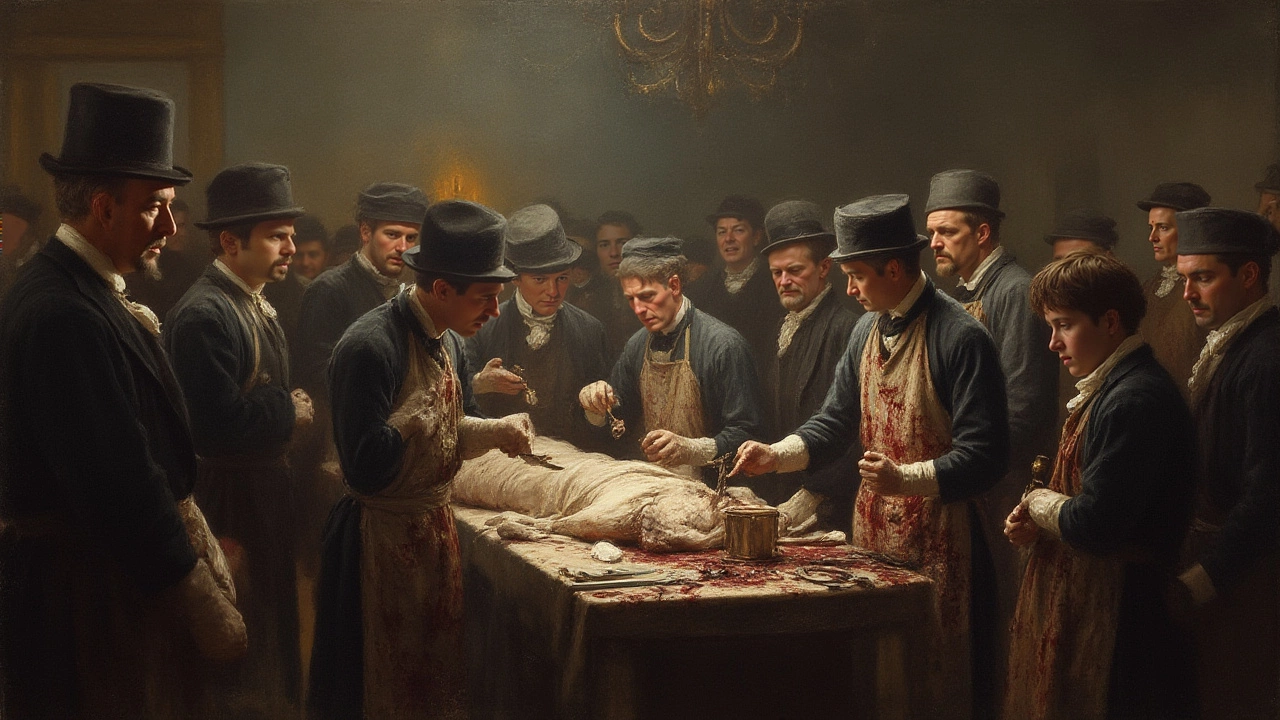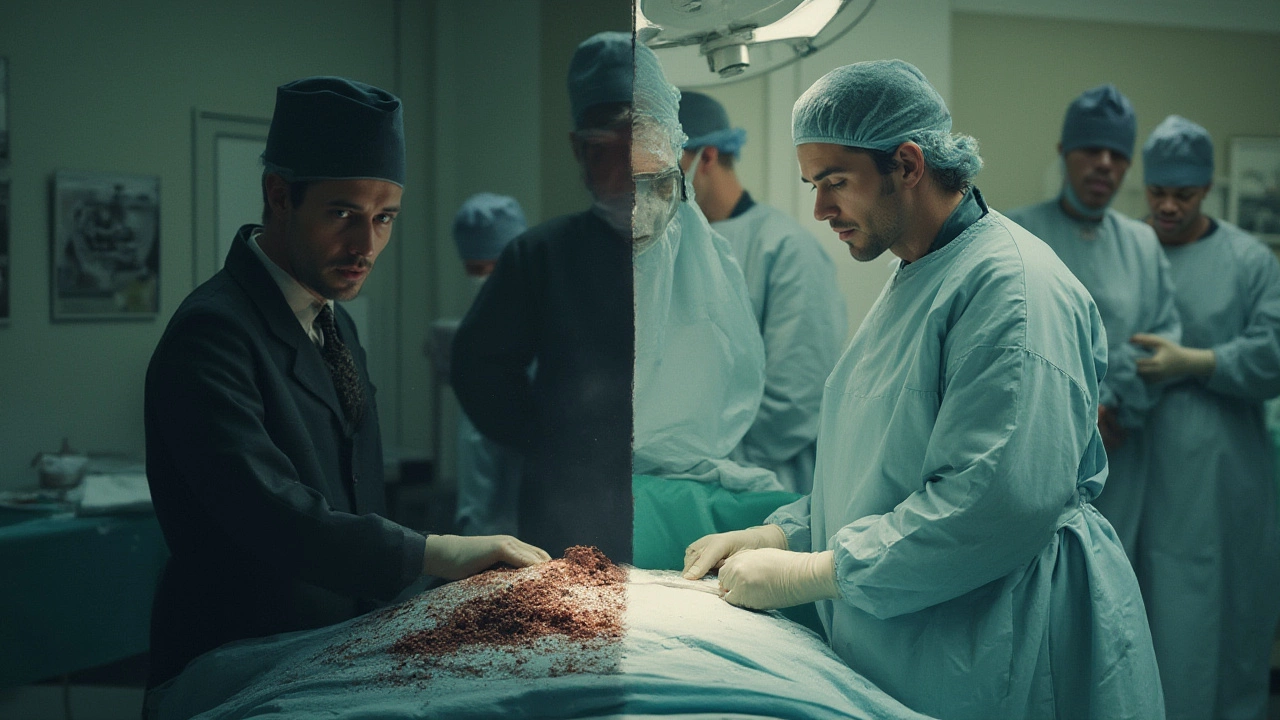 Jul, 5 2025
Jul, 5 2025
Ever heard about a surgery so disastrous, more people died than were actually operated on? Sounds like a sick joke, but that’s exactly what happened nearly two centuries ago. You might picture today’s sterile, high-tech operating rooms, but in the early 1800s, surgery was pretty much a dice roll between life and death. And sometimes, as in the case of Dr. Robert Liston’s infamous operation, the odds were way, way worse.
The Legend of the 300% Mortality Rate Surgery
Step back to Victorian London, where Dr. Robert Liston was known for being the fastest surgeon in town. In that era, speed meant everything because people didn’t have anesthesia to dull the pain. Imagine biting down on nothing but a leather strap while someone sawed through bone. That’s the reality Liston’s patients faced, and his quick hands were as close as you could get to mercy.
Now, about that wild 300% mortality rate—how does it even happen? The story is weird but true. In the 1840s, Liston performed a leg amputation in front of an audience of students—something totally normal at the time. During the rush, he accidentally sliced through his assistant’s fingers. In all the chaos, he also slashed the coat of a nearby bystander. The patient, already at huge risk, died soon after from gangrene. The assistant also died of infection. And here’s where the story goes from tragedy to farce: the bystander, thinking he’d been fatally cut (even though it was only his coat), dropped dead of shock and possibly a heart attack. So, one surgery—three deaths. That’s how you get a 300% mortality rate from a single operation.
This isn’t just some twisted old legend, either. Medical textbooks and history journals have recorded the story. The tale has stuck in surgical lore partly because it’s so unbelievable, but also because it captures just how high the stakes were back then.

Victorian Surgery: A Bloody Battlefield
Surgery before modern medicine was brutal. People saw doctors as a last resort, not as saviors. Operating theatres (and yes, they really did resemble a stage or amphitheatre) reeked of sweat, blood, and terror. Surgeons often worked in street clothes, barely washing their hands, if at all. Germs hadn’t been discovered yet—so infection after surgery was pretty much a coin toss. Your odds of surviving even minor procedures dropped fast if the surgeon wasn’t careful, or if you just had bad luck and the wound got infected.
But Liston was a rockstar in his day. He could whip through an amputation in under three minutes, a speed that probably saved more lives than it cost—at least, on average. Still, with no concept of sterility and absolutely no pain relief, even the best were playing a deadly game every time they picked up their knife.
Why so fast, though? Simple: no anesthesia. Ether wasn’t used until 1846, and even then, it took time to catch on. Patients would be held down by strong assistants, bracing for agony. The faster the surgery, the less time for agony, panic, and shock—which, ironically, could kill you on the spot.
Table: Victorian Surgery vs. Modern Surgery
| Aspect | Victorian Era (c. 1840) | Modern Era |
|---|---|---|
| Anesthesia | None | Widely used; multiple types |
| Infection Control | Rare handwashing; no gloves; unsterile tools | Strict sterilization; gloves; antibiotics |
| Typical Mortality Rate (amputation) | 30-40% | Under 3% |
| Operating Time (leg amputation) | 1-5 minutes (rush) | Varies; much slower and meticulous |
It wasn’t just Liston, though. Surgeons everywhere faced high mortality rates. According to data from the time, amputations could kill upwards of 40% of hospital patients. Hospitals, ironically, were more dangerous than home for surgery, because they were packed with germs that nobody understood yet. Florence Nightingale and Joseph Lister only transformed cleanliness into gospel later in the century.
Some surgeons, desperate to save lives, did what seemed logical at the time—they reused the same saws, wore blood-spattered coats like badges of honor, and sped through procedures like their own lives depended on it. This all set the stage for high stakes and, occasionally, mind-blowing mistakes.

Lessons and Lasting Scars: How Medical Mistakes Shaped Modern Surgery
The 300% mortality surgery isn’t just a horror story to shock med school students. There’s something to learn from what happened in those grisly days. Think about how quickly medicine evolved because of disasters like this one. After tragedies piled up, the medical world finally started asking the tough questions: Why are so many patients dying? Is speed always worth the risk? Couldn’t there be a safer way?
It was the wave of shocking failures—including Liston’s legendary mishap—that nudged doctors to look for better techniques. Pretty soon, the introduction of ether and chloroform in the late 1840s allowed surgeons to slow down and focus more on precision than pure speed. Around the same time, Joseph Lister (yep, the guy behind Listerine) rolled out the concept of antiseptics. He figured out germs cause infections, so cleaning hands, instruments, and wounds made all the difference. Death rates finally started dropping as these ideas spread through Britain and the world.
Fast-forward to now: surgeries that were once a death sentence are routine. Anesthesia lets doctors take their time, do delicate work, and keep patients comfortable. Sterile procedures mean that post-op infections are mostly preventable, not inevitable. Nurses, surgeons, and anesthetists work as a team for safety checks and to catch errors before they happen. The horrifying lessons of history shaped every protocol used in surgery today.
And what about Dr. Liston? Despite his infamous operation, he’s remembered for being ahead in some ways. He’s credited with carrying out the first European surgery under ether anesthesia. His push for speed came from wanting to reduce suffering—he just worked in a time when that sometimes meant the risks outpaced the rewards. In today’s world, nobody would get away with a wild three-death operation, and that’s exactly thanks to what we’ve learned from people like him.
So, whenever you hear about wild mistakes in history—like the famous 300% mortality rate surgery—remember, that’s how breakthroughs are born. Every scar left a lesson. The medical world is safer now because of the hard, often tragic, lessons from people who lived (and sometimes died) in those hazardous early days of surgery. If you’re heading into the hospital for an operation now, you can thank folks like Liston not just for their bravery or speed, but for showing the world how badly things could go when safety wasn’t a priority—so that future patients would never face those impossible odds again.
